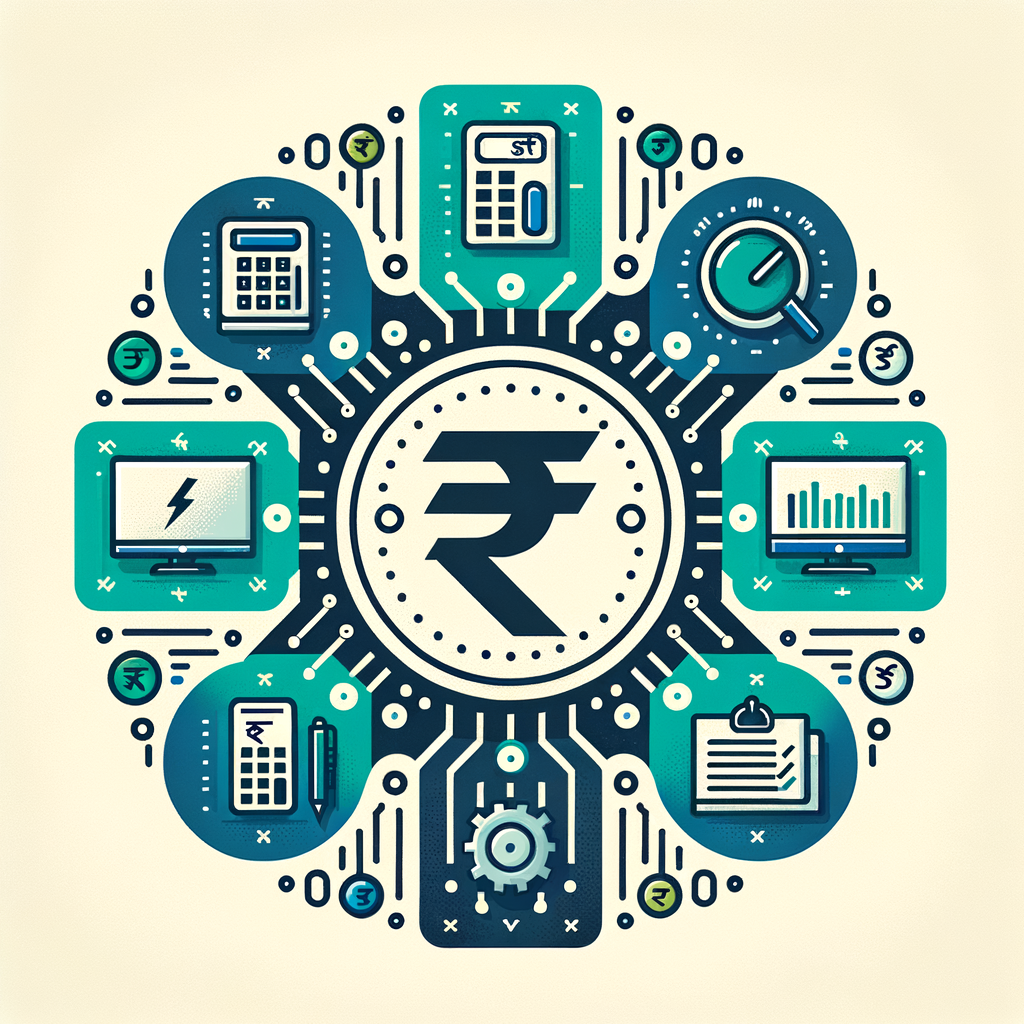GST on Electronics and Home Appliances – Latest Updates & Impact
Planning to buy a new smartphone or upgrade your home with a new TV? Or are you a business owner selling these goods? Understanding the Goods and Services Tax (GST) is crucial for making informed financial decisions. The rules and rates surrounding the GST on Electronics and Home Appliances can directly influence the final price you pay or charge, making it essential to stay updated. As rates can be revised after GST Council meetings, being aware of the latest changes helps both consumers budget effectively and businesses maintain perfect compliance. This comprehensive guide will break down the current GST rates for 2024, explain the impact of GST on electronics India for both buyers and sellers, and provide the most recent updates to keep you well-informed.
Understanding the GST Framework in India
Before diving into specific rates, it’s helpful to have a basic understanding of what GST is and how it functions. The Goods and Services Tax (GST) is a single, comprehensive, and destination-based tax levied on the supply of goods and services across India. It was introduced to simplify the country’s complex tax structure by replacing a multitude of indirect taxes that existed previously, such as Value Added Tax (VAT), Central Sales Tax, Service Tax, and Excise Duty. This unification of taxes into one system was designed to eliminate the cascading effect of taxes (tax on tax), streamline administration, reduce compliance burdens, and create a common national market for goods and services. For consumers, this means more transparent pricing, and for businesses, it provides a clearer mechanism for taxation and claiming tax credits.
The Components of GST: CGST, SGST, and IGST
When you look at a bill for an electronic item, you will notice the GST amount is often split into two or three components. This can seem confusing, but it’s a straightforward system based on where the transaction takes place. Understanding these components is key to deciphering your invoice and for businesses to manage their tax obligations correctly.
- CGST (Central GST): This is the portion of the tax collected by the Central Government on a sale that happens within the same state (an intra-state transaction).
- SGST (State GST): This is the portion of the tax collected by the State Government on that same intra-state transaction.
- IGST (Integrated GST): This tax is collected by the Central Government when a sale happens between two different states (an inter-state transaction). The collected IGST is later apportioned between the Central and the destination State governments.
For example: If an electronics store in Mumbai, Maharashtra sells a washing machine to a customer also in Mumbai, the 18% GST will be split into 9% CGST and 9% SGST. However, if the same store sells that washing machine to a customer in Bangalore, Karnataka, the entire 18% will be charged as IGST.
Current GST Rates on Electronics and Home Appliances (2024 Updates)
The GST Council categorizes goods into different tax slabs, primarily 5%, 12%, 18%, and 28%. Most consumer electronics and home appliances fall under the 18% or 28% slab. The distinction often depends on whether the item is considered a necessity or a luxury good. Staying informed about these rates is crucial, as even a small change can significantly impact costs. The latest electronics GST updates India confirm that while many common items are taxed at a standard rate, premium or large-capacity products attract a higher tax. Below is a detailed breakdown of the current GST rates applicable to popular electronic items and home appliances.
GST Rates on Popular Electronic Items
The majority of personal computing and communication devices fall under a single, standardized tax slab, which has simplified pricing across the country. These items are essential for both personal use and business operations, and their classification under the 18% slab makes them more accessible.
- Mobile Phones, Laptops, Tablets & Computers: 18% GST
- Computer Monitors & Printers: 18% GST
- Power Banks, Chargers, and other mobile accessories: 18% GST
- Digital Cameras & Video Cameras: 18% GST
GST Rates on Key Home Appliances
When it comes to home appliances, the GST rates can vary. The government has made a clear distinction based on the size or perceived luxury status of the item. This is most evident in the case of televisions. The home appliances GST news India often revolves around potential rate changes for these categories during GST Council meetings, as they are significant purchases for most households.
- Televisions (up to 32 inches): 18% GST
- Televisions (above 32 inches): 28% GST
- Refrigerators & Washing Machines: 18% GST
- Air Conditioners (ACs) & Dishwashers: 28% GST
- Small Appliances (Mixers, Grinders, Irons, Water Heaters): 18% GST
Stay Informed: Latest GST Updates for Electronics Market India
GST rates are not static and are subject to revision by the GST Council, which meets periodically to review the tax structure. It is vital for both consumers and businesses to stay updated on the outcomes of these meetings. Any changes, whether a rate reduction or an increase, are announced through official press releases. To ensure you have the most accurate and current information, it is always best to consult official sources. For the most recent official announcements and detailed circulars, always refer to the GST Council website or the CBIC portal. This practice helps in avoiding misinformation and ensuring compliance with the latest regulations.
The Impact of GST on Electronics India: What It Means for You
The implementation of GST has had a multifaceted impact on the electronics sector, affecting everyone from the end consumer to the small business owner. For consumers, it has brought about a more uniform and transparent pricing structure, eliminating the confusion of multiple state and central taxes. For businesses, while it has simplified the tax system, it has also introduced new compliance requirements that need careful management. Understanding these implications is key to navigating the financial landscape of the electronics market in India.
For Consumers & Salaried Individuals: How GST Affects Final Price
One of the most significant benefits of GST for consumers has been the standardization of taxes across the country. Before GST, the final price of a laptop or a refrigerator could vary significantly from one state to another due to different VAT rates. Now, the price is more or less uniform, with variations arising mainly from logistics and local market dynamics. GST has also made pricing more transparent. When you receive a bill, the GST amount is clearly mentioned, allowing you to see exactly how much tax you are paying. The calculation is straightforward:
Final Price = Base Price + (Base Price * GST Rate %)
For example, if the base price of a mobile phone is ₹20,000 and the GST rate is 18%, the GST amount would be ₹3,600 (₹20,000 * 18%). The final price you pay would be ₹23,600. Always ensure you receive a proper GST invoice for your purchases, as it is a proof of tax payment and essential for warranty claims.
For Small Business Owners: GST Compliance and Input Tax Credit (ITC)
For small business owners running electronics or home appliance stores, GST brings both opportunities and responsibilities. The most significant advantage is the concept of Input Tax Credit (ITC). ITC allows you to reduce your final tax liability by claiming credit for the GST you have already paid on your business purchases (inputs). This mechanism prevents the cascading of taxes and reduces the cost of doing business, making your products more competitively priced.
Input Tax Credit (ITC) Explained: Imagine you own a retail store and purchase washing machines from a distributor for ₹15,000 each, paying an 18% GST of ₹2,700 per unit. When you sell this washing machine to a customer for ₹20,000, you collect 18% GST, which is ₹3,600. Instead of paying the full ₹3,600 to the government, you can use the ₹2,700 you already paid as an Input Tax Credit. Your final GST liability for this sale will only be ₹900 (₹3,600 – ₹2,700).
To leverage ITC and remain compliant, businesses must focus on two key areas. First is proper invoicing; issuing and receiving GST-compliant invoices is mandatory to claim ITC. Second is the correct use of HSN (Harmonized System of Nomenclature) codes for every product. Using the right HSN code ensures accurate tax calculation and reporting, which is a cornerstone of proper GST compliance for home appliances India and the electronics sector.
How TaxRobo Can Simplify Your GST Filings
While the GST framework is designed for simplicity, the practical aspects of compliance—such as monthly or quarterly filings, accurate HSN code management, and precise ITC reconciliation—can be complex and time-consuming for a small business owner. Any error can lead to penalties or loss of valuable Input Tax Credit. This is where professional guidance becomes invaluable. Managing inventory with varying GST rates, ensuring every invoice is perfectly compliant, and reconciling purchases and sales for accurate returns requires expertise and diligence.
TaxRobo offers a suite of services designed to take this burden off your shoulders. Our experts can help you with:
- Effortless GST Registration and Filing: We handle all the paperwork and ensure your returns are filed accurately and on time, every time.
- Expert Assistance with ITC Claims: We help you maximize your ITC claims, ensuring you get back every rupee you are entitled to, which directly improves your cash flow.
- Comprehensive Accounting and Bookkeeping: Our services ensure your financial records are always up-to-date and compliant with all GST regulations.
Don’t let GST compliance slow your business down. Contact TaxRobo’s experts today for a free consultation!
Conclusion
In today’s dynamic market, having a clear grasp of the financial regulations that affect your purchases and business operations is more important than ever. The Goods and Services Tax has fundamentally reshaped the pricing and tax structure of the electronics and home appliances industry in India. For consumers, it has led to more transparent and uniform prices, while for businesses, it has streamlined the tax process through mechanisms like Input Tax Credit. The key lies in staying updated with the rates, which predominantly stand at 18% for common items and 28% for luxury goods like large TVs and air conditioners. Understanding the nuances of GST on Electronics and Home Appliances is essential in today’s market. Whether you have a question about a recent purchase or need help with your business’s GST returns, our team at TaxRobo is here to assist.
Frequently Asked Questions (FAQs)
1. What is the current GST rate on mobile phones and laptops in India?
The current GST rate for mobile phones, laptops, and computers in India is 18%. This rate applies to most personal computing devices and their essential accessories like chargers and data cables.
2. As a business owner, can I claim Input Tax Credit (ITC) on an AC I bought for my office?
Yes, if you are a GST-registered business, you can typically claim ITC on goods like air conditioners purchased for business use (e.g., installed in your office, store, or factory). To claim this credit, you must have a valid GST invoice from the seller that includes your business’s GSTIN.
3. Why is there a different GST rate for small and large TVs?
The GST Council has classified certain goods as luxury items, which attract a higher tax rate of 28%. In the case of televisions, the screen size is used as a differentiator. Currently, televisions with a screen size above 32 inches are considered a luxury good and are placed in the 28% GST slab, while those up to 32 inches fall under the more standard 18% slab.
4. Where can I find the official government updates on GST rates?
The most reliable source for the latest GST updates electronics market India is the official Central Board of Indirect Taxes and Customs (CBIC) website. Additionally, you can find official press releases and notifications detailing any rate changes on the official GST Council portal immediately after each council meeting.



